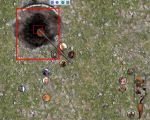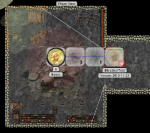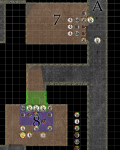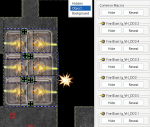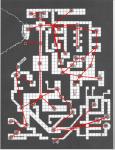Beoric
8, 8, I forget what is for
I thought I would kick around some of my prepwork, and things I am working on. Mostly because things are pretty quiet around here, but also because writing it out like this may help me notice flaws in the design.
The campaign is for a group of people I have never gamed with before, but know from other contexts; I think most of them have played a session or two of various editions of D&D, but not more than that. I'm assuming they are used to more of a Trad/NeoTrad playstyle, which is why I picked N1, which has a lot of elements pointing in the direction of adventure.
I want to start the campaign at first level, partly because that's how I prefer to do things, but also because for 4e noobs it's best if they start with as few combat options as possible on the character sheet. The thing is, first level 4e characters don't have access to most of the utility magic that first level characters have in every other edition; they don't get that until second level. So I am converting N1 on the assumption that there will be 7ish PCs of second level, which means I need something for the players to do at first level. So I am putting them through the incomplete sample monastery dungeon at pp. 94-6 of the 1e DMG.
I was going to write more about the setup, but I got interrupted by kids and have run out of time for the evening.
The campaign is for a group of people I have never gamed with before, but know from other contexts; I think most of them have played a session or two of various editions of D&D, but not more than that. I'm assuming they are used to more of a Trad/NeoTrad playstyle, which is why I picked N1, which has a lot of elements pointing in the direction of adventure.
I want to start the campaign at first level, partly because that's how I prefer to do things, but also because for 4e noobs it's best if they start with as few combat options as possible on the character sheet. The thing is, first level 4e characters don't have access to most of the utility magic that first level characters have in every other edition; they don't get that until second level. So I am converting N1 on the assumption that there will be 7ish PCs of second level, which means I need something for the players to do at first level. So I am putting them through the incomplete sample monastery dungeon at pp. 94-6 of the 1e DMG.
I was going to write more about the setup, but I got interrupted by kids and have run out of time for the evening.
Last edited:
